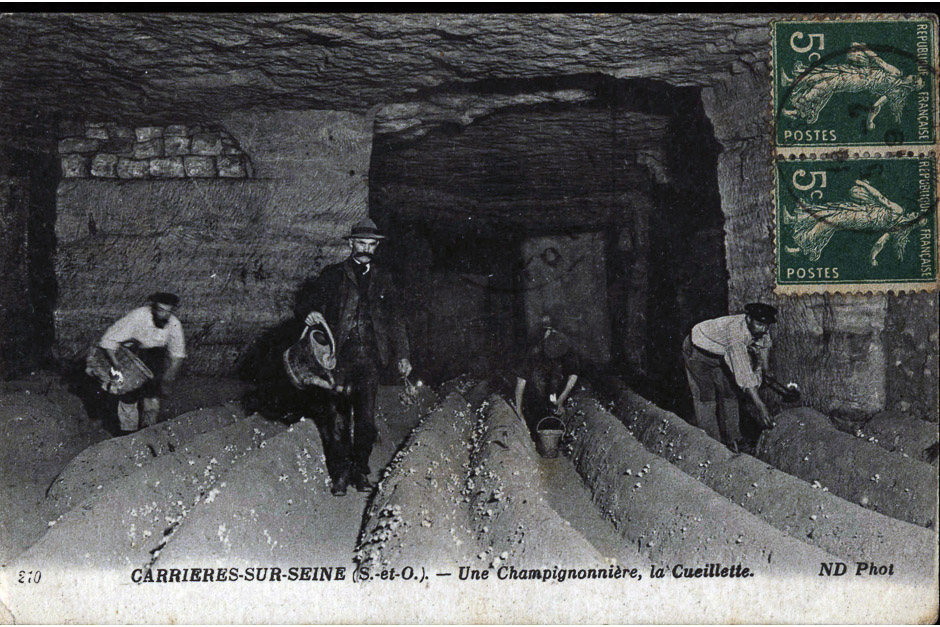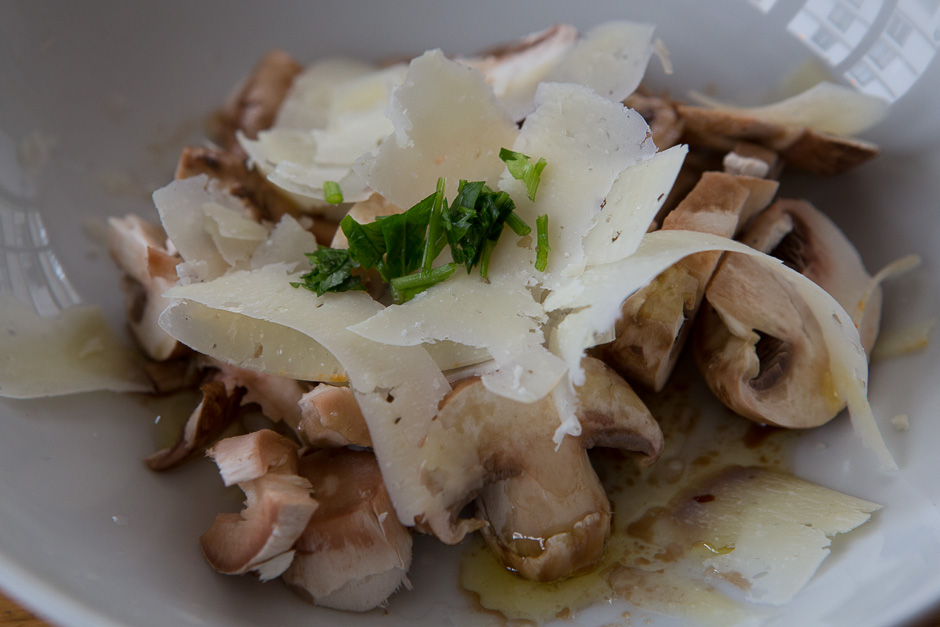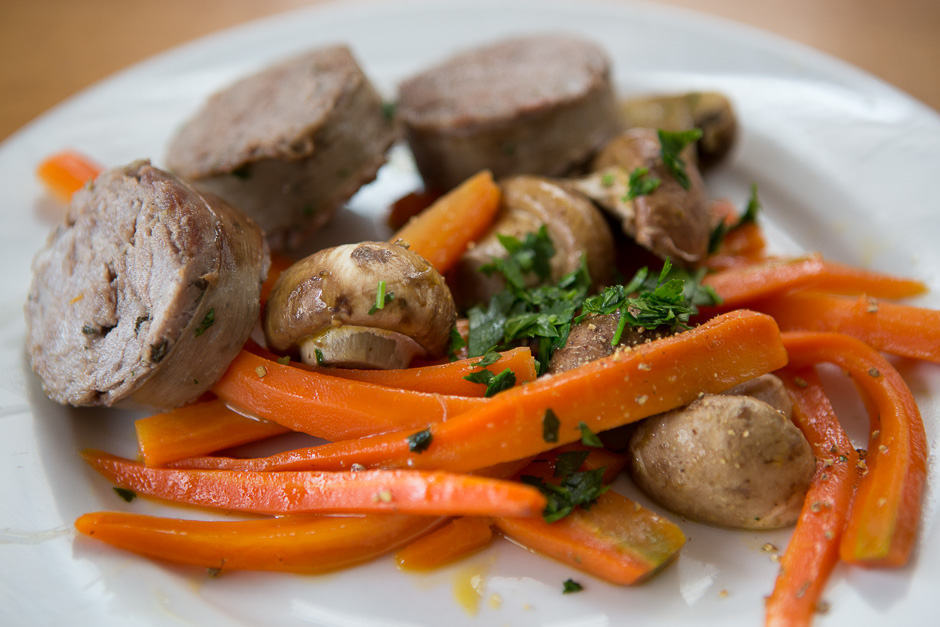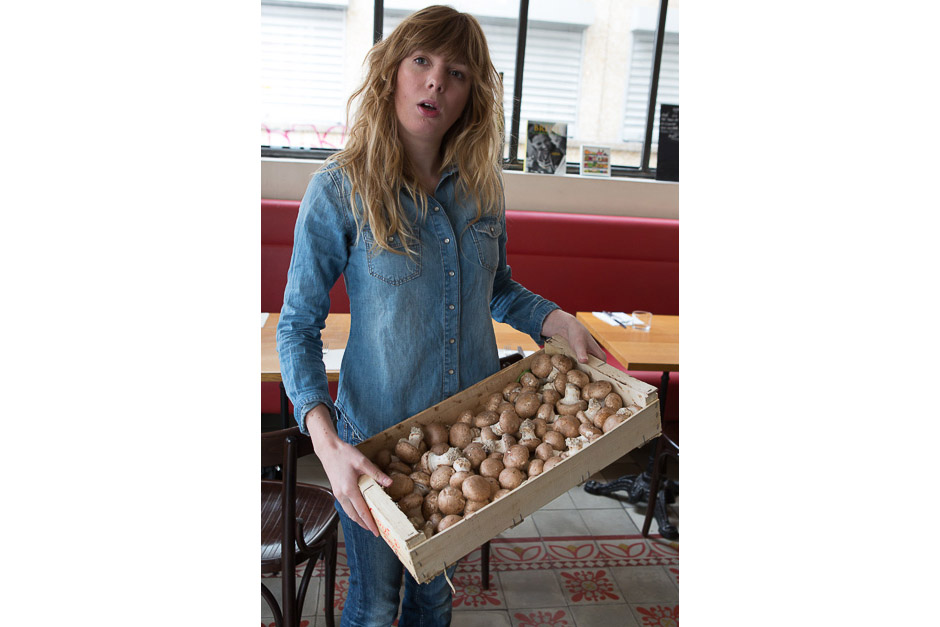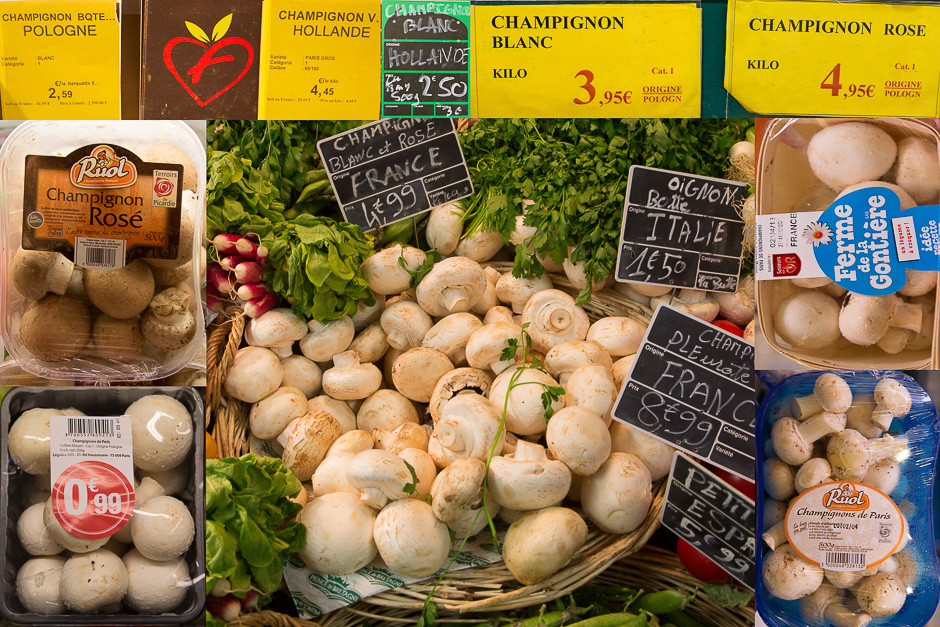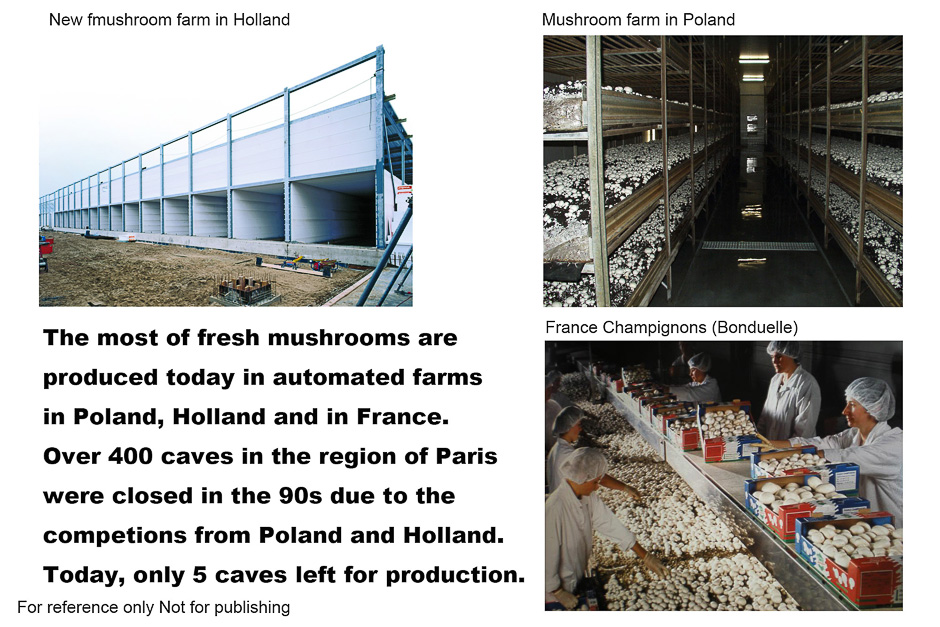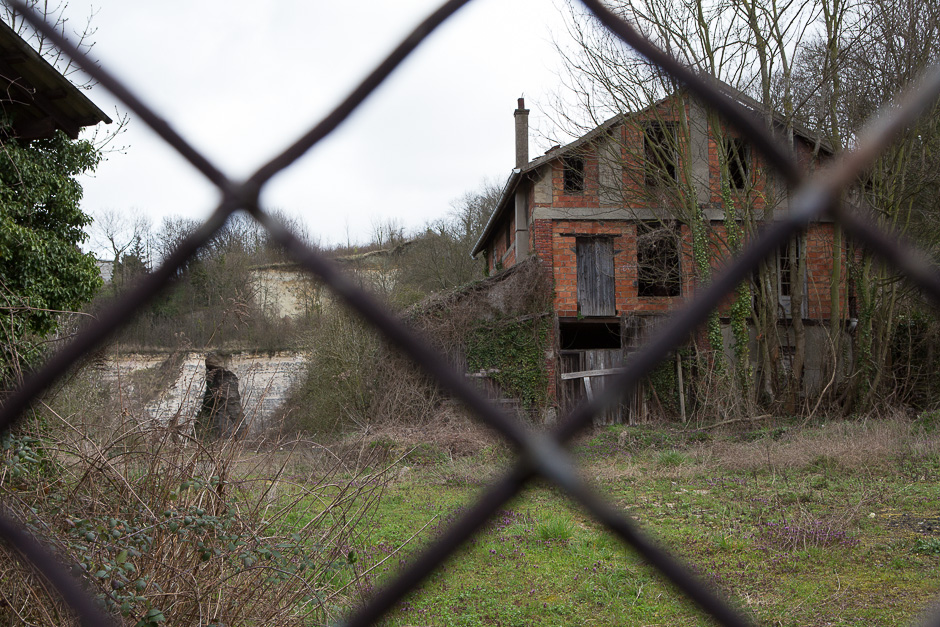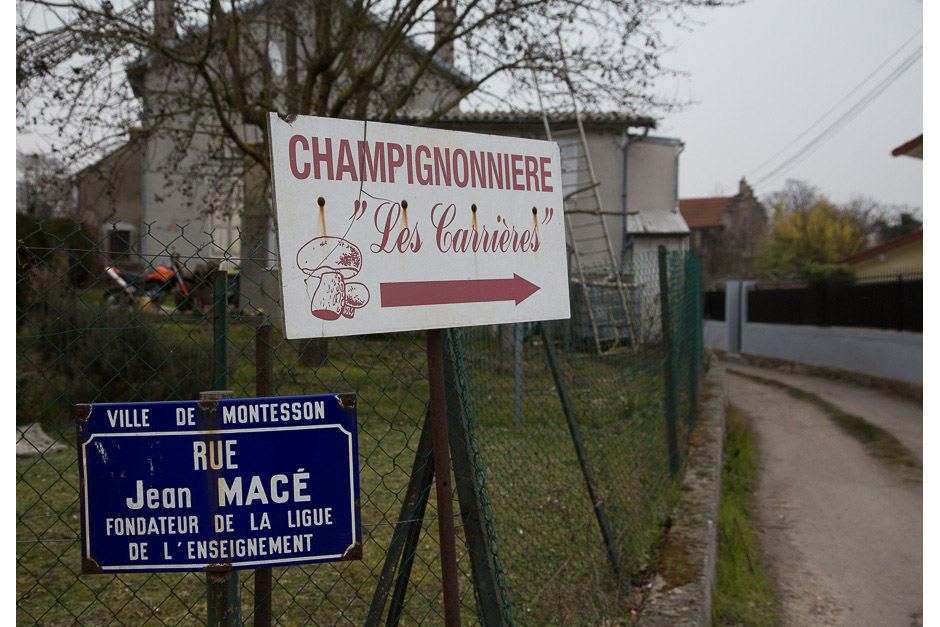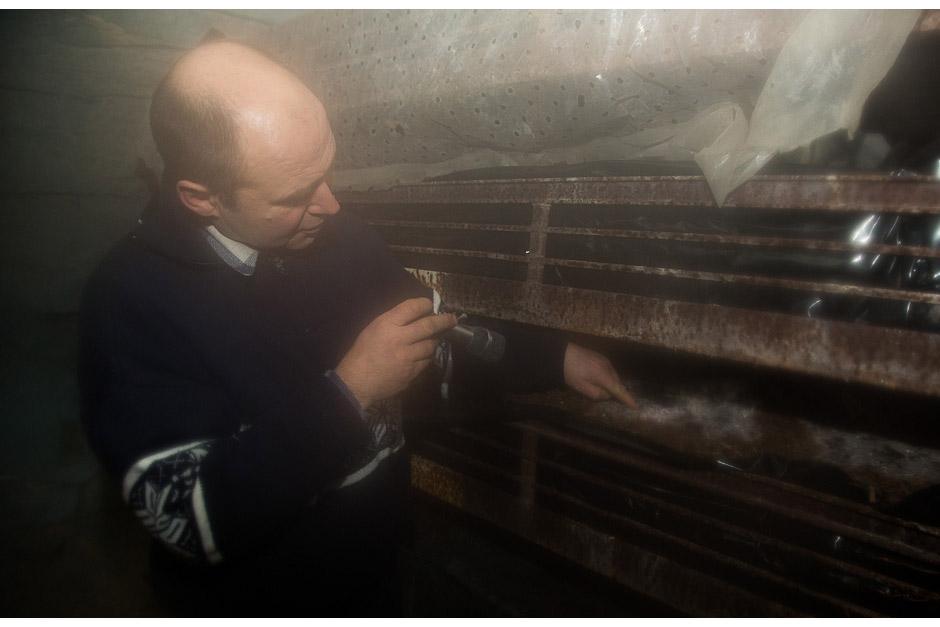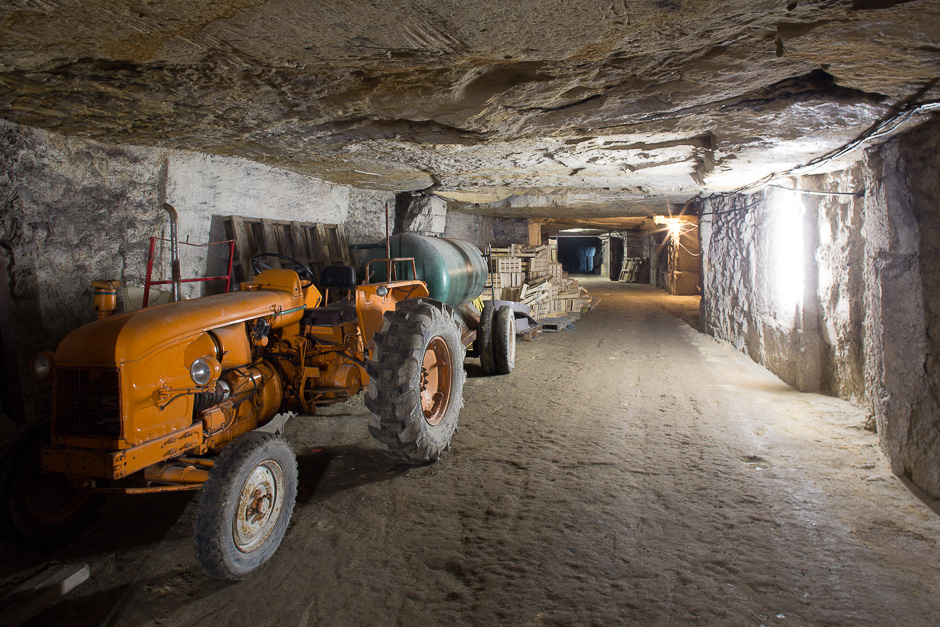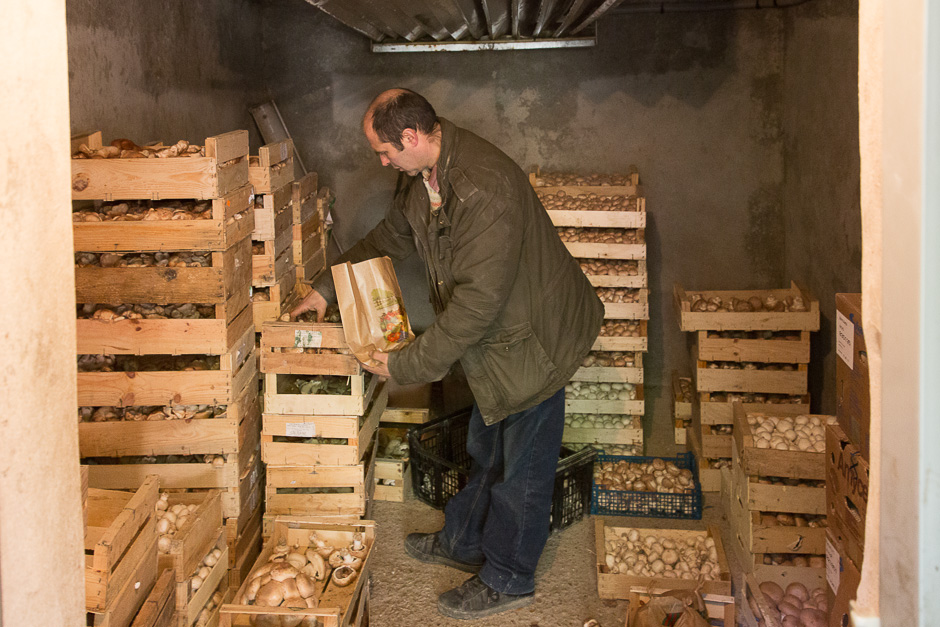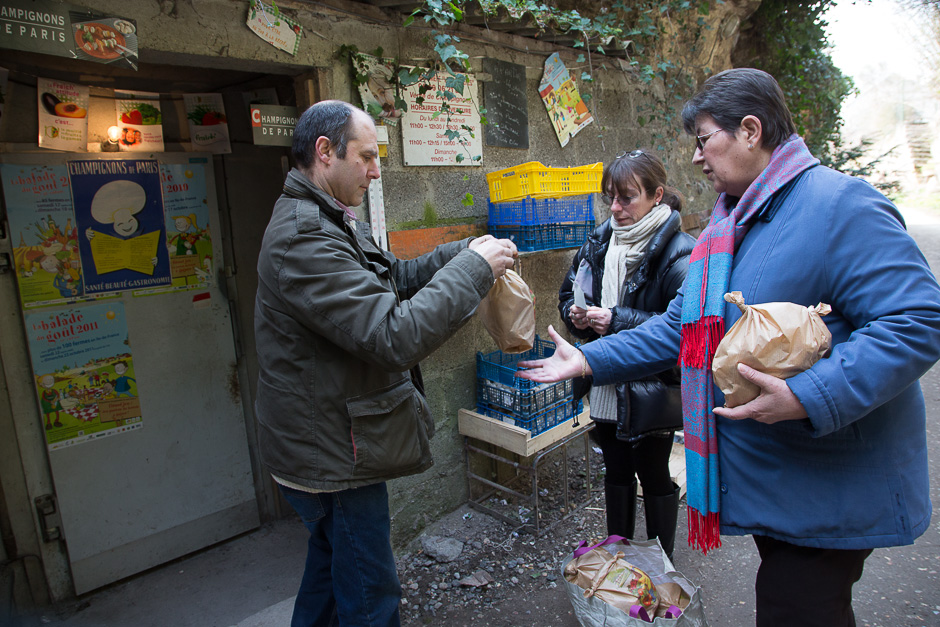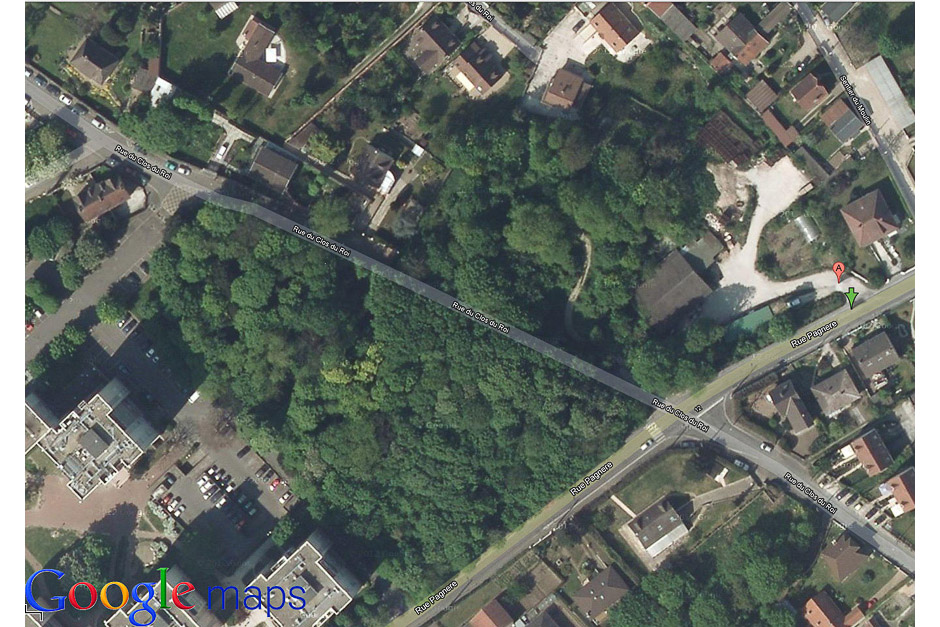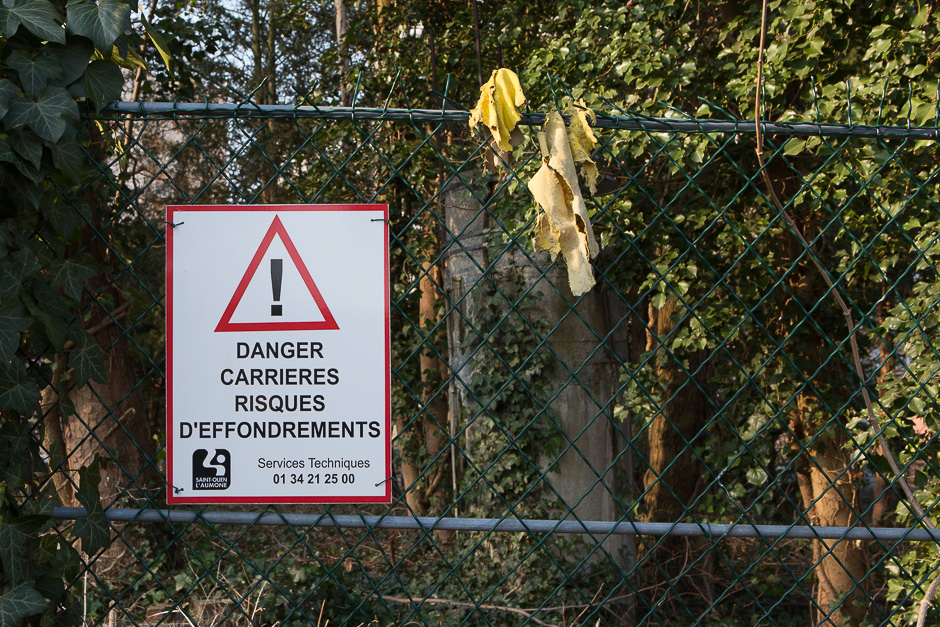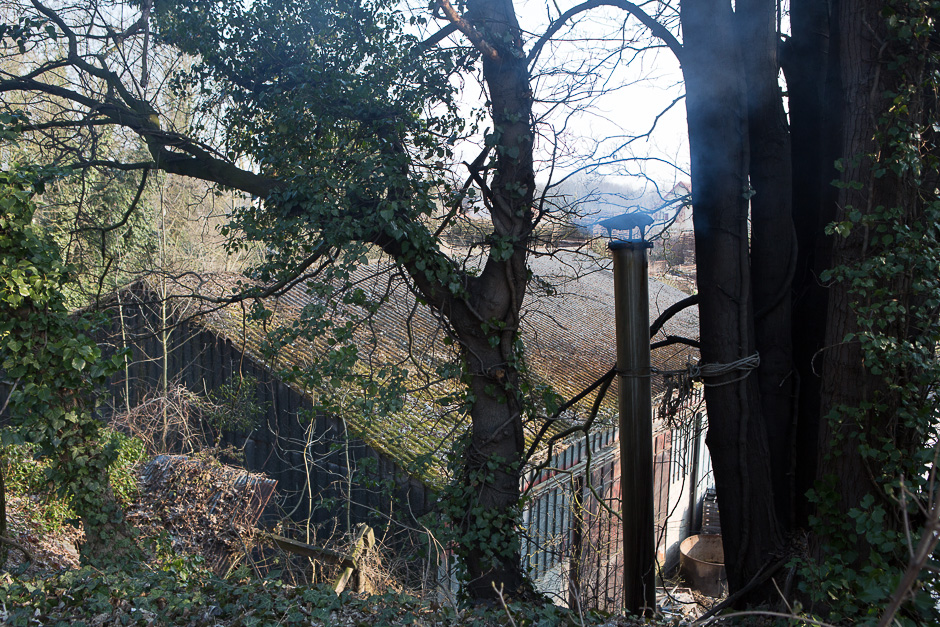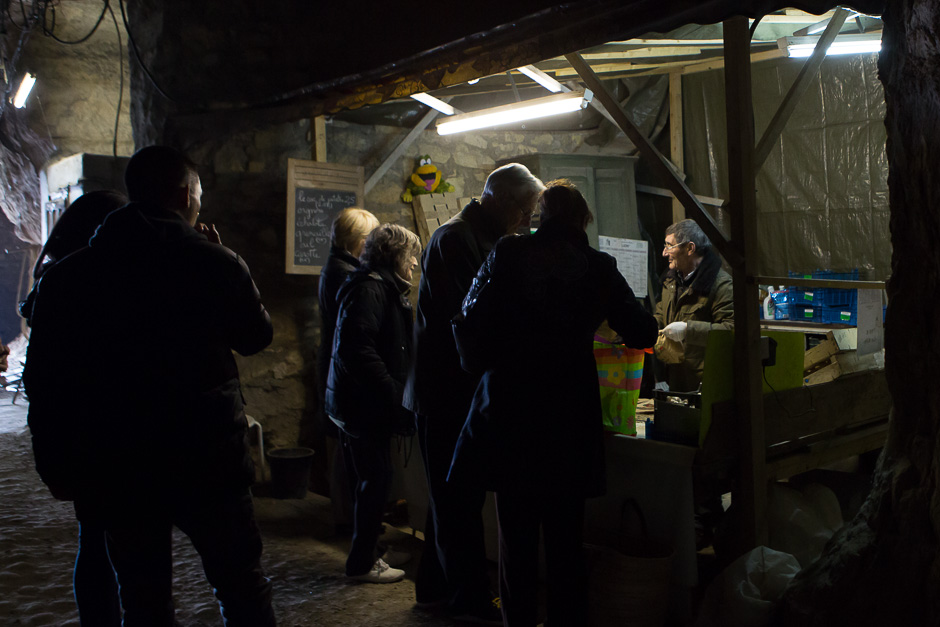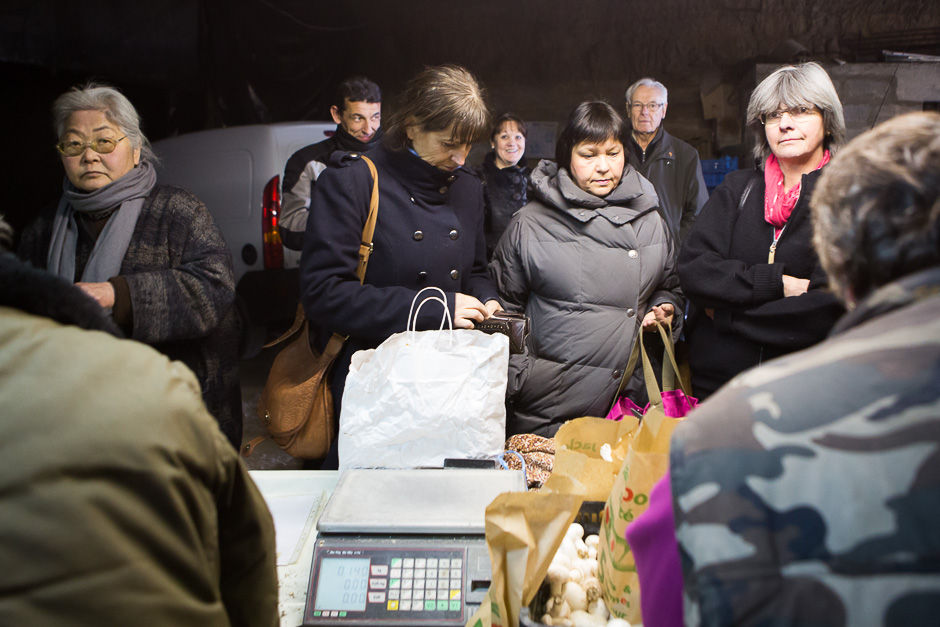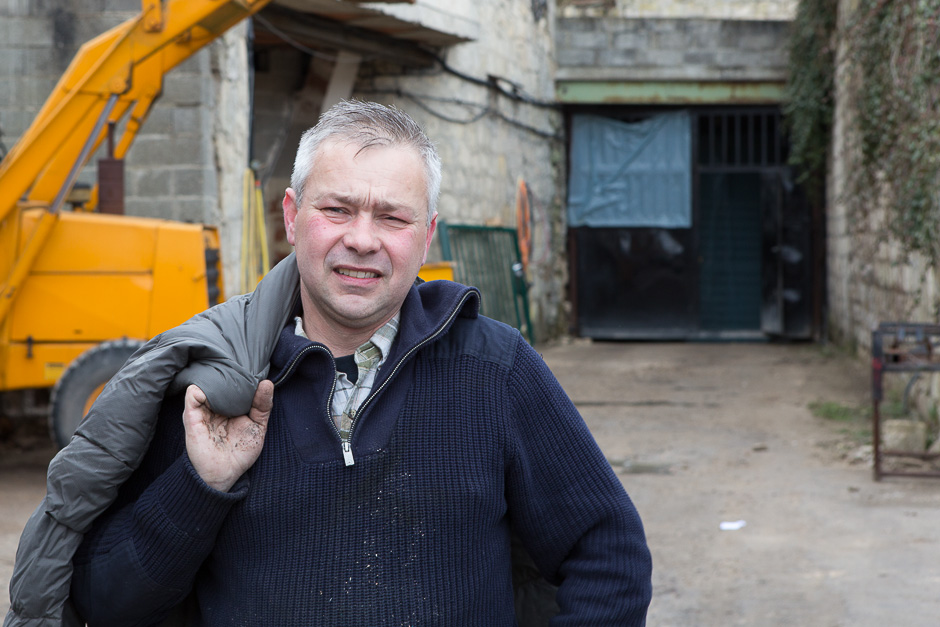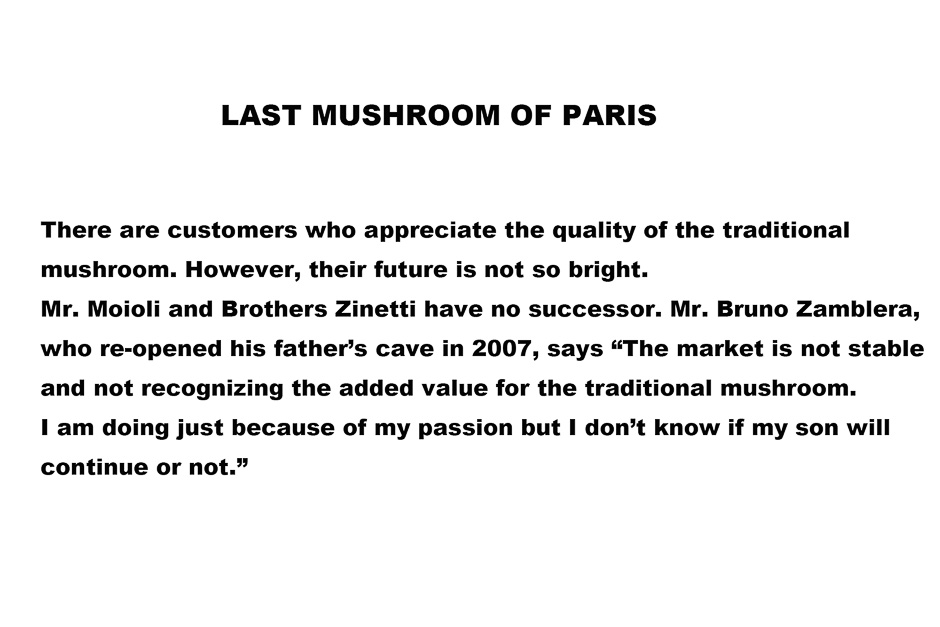Button mushrooms is called in France “mushroom of Paris (champignon de Paris)”. Its cultivation started in the region of Paris in the 17th century. In the 18th century, caves of old quarries of limestone in the region of Paris were used for bigger productions. Stable temperature of 14 degree and dark environment were optimal for the cultivation of mushroom of Paris.
マッシュルームはフランスではパリきのこ(シャンピニョン・ド・パリ)と呼ばれている。マッシュルームの人工栽培は、17世紀にパリ近郊の農家によって行われたのが最初だ。18世紀に入ると、パリ内外の石灰岩の地下採石場跡の洞窟が量産目的で使われるようになった。14℃で安定した温度と暗い環境がマッシュルーム栽培に適していた。
Mushroom of Paris is a very popular vegetable and it is indispensable for the French cuisine. It is consumed in France 2.3kg per person per year. It can be found at any supermarkets or vegetable shops. However, it is very difficult to find authentic “Mushrooms of Paris” made in the caves of the region of Paris.
Today, the most of productions of mushroom of Paris are automated and the cultivation is done in factories. There are only five mushroom caves are left for production today in Ile-de-France while there were 426 mushroom caves at the peak time. These five remaining mushroom producers are in the departments of Yveline and Val d’Oise and they all have Italian names: Moioli, Spinelli, Zinetti and Zamblera.
The history of mushroom production by the Italian immigrants started with a man called Joseph Zinetti who was born in 1871 in a small village near Bergamo. At the age of 19, he decided to leave Italy. On his way to America, he stopped at Gagny where he decided to settle and he started to work at a small mushroom producer in 1890. Then, in 1897, he succeeded the business after the retirement of the owner.
Production of mushroom requires many workers and he invited people from his village and its surrounding area. Joseph and his son Angel were very innovative and they improved methods of cultivation which made them very competitive. People working in their caves became independent with own caves and more people were invited from Italy. The mushroom production in the region of Paris became mostly Italian immigrants’ business.
From the mid-80s, French mushroom farmers were faced with hard competitions from Holland. Dutch mushroom producers industrialized the production by implementing automated factories, except for the harvest by hand. This reduced considerably the cost. French mushroom producers had difficult time but many could manage by modernizing the production such as creating a cooperative for compost production, multi-bunk beds, etc. But in the 90s, new competitions from Poland became extremely harsh. Mr. Pierre Zamblera says “There was no way to compete with them. My cost was 9 francs (€1.40)/kg while they were selling at 6 francs (€0.90). I was obliged to close the cave in 1995. In this area there were about 15 mushroom producers and they were all closed” The caves of the family Zinetti, the origin of their business, were also closed in 1992.
The traditional mushrooms have differences from the industrial mushrooms:
● Good flavor and taste thanks to the usage of limestone sands
● Good crispy feeling because the traditional mushrooms are quite firm and with less water compared with the industrial mushrooms which are cultivated with accelerated growth.
These differences are not recognized except for the connoisseurs and no added value was granted by the public market.
Today, only five traditional mushroom producers are remaining in the region of Paris. The price situation has been slightly improved and there are customers who appreciate the quality of the traditional mushroom. However, their future is not so bright. Mr. Moioli and Brothers Zinetti have no successor. Mr. Bruno Zamblera, who reopened his father’s cave in 2007, says “The market is not stable and not recognizing the added value for the traditional mushroom. I am doing just because of my passion but I don’t know if my son will continue or not.”
フランスではマッシュルームはとてもポピュラーな食材で、フランス料理には欠かすことができない。フランスではひとり当たり年間2.3kgが消費されている。どこのスーパーや八百屋でも売られている。しかし、伝統的な栽培法でパリ近郊の洞窟で栽培されている本物の「パリのきのこ」を見つけるのは極めて難しい。
今日、イル・ド・フランス(パリと近郊を含む地域)で伝統栽培が行われている洞窟は5か所しか残っていない。ピーク時には426か所の洞窟で栽培されていたとの記録が残っている。残った5軒の農家は、パリ西部のイヴリーヌ県とヴァルドワーズ県にあり、すべてイタリア系の名字だ: モイオリ、スピネッリ、ジネッティ、ザンブレラ。
イタリア系移民によるマッシュルーム栽培の歴史は、ジョゼフ・ジネッティという名の1871年にイタリアのベルガモ近くの村で生まれた男に始まる。ジョゼフ・ジネッティは19歳の時、イタリアを出てアメリカに行く決意をした。途中パリ郊外のガニーという村に立ち寄り、そのまま定住することを決め、1890年に小さなマッシュルーム栽培農家で働くことにした。その後1897年に、引退したオーナーから事業を譲り受けた。
マッシュルーム栽培は多くの人手を要するので、出身の村やその近郊から仲間が呼び寄せられた。ジョゼフとその息子アンジェルは進取の気概に富み、栽培方法に様々な改善を加えた。それにより競争力が高まった。彼らの洞窟で働いていた仲間は、別の洞窟を手に入れて独立し、さらに多くの人たちがイタリアから呼び寄せられた。この結果、パリ近郊のマッシュルーム栽培は殆どがイタリア系移民のものとなった。
1980年代半ばからオランダ産マッシュルームとの競争が激しくなった。オランダでは、人手が必要な収穫以外を自動化された工場で栽培するようになった。これによりコストが著しく下げられた。フランスの栽培農家は困難に直面したが、協同組合で堆肥を作ったり、複数段のベッドでの栽培など合理化を進め、多くは生き残ることができた。しかし、90年代に入ってポーランド産との競争が極めて激しくなった。ピエール・ザンブレラ氏は、次のように説明してくれた。「競争自体成り立たなかった。自分たちのコストはキロ9フラン(€1.40)だったが、ポーランド産の売価が6フラン(€0.90)だった。1995年には栽培洞窟を閉じざるをえなくなった」。彼らの原点でもあるジネッティ家の栽培事業も1992年に閉じられた。
伝統的栽培法によるマッシュルームは、工業的に作られているものとは違いがある。
・ 石灰石の砂(採石時の切粉)を使うことで、豊かな風味が得られる
・ 工場での促成栽培に比べて時間をかけて育てるため固くシャキッとした食感が得られる
これらの違いは、レストランのシェフや食通以外には認識されておらず、一般市場では付加価値が認められていない。
今日、パリ近郊では5軒の栽培農家しか残っていない。市場価格は以前よりは少し改善しており、伝統栽培の品質を認める消費者もいるが、未来はそれほど明るくない。モイオリ氏とジネッティ兄弟には後継者がいない。父親が閉じた洞窟での栽培を2007年に再開したブルーノ・ザンブレラ氏は次のように言っている。「市場は安定しておらず、伝統農法の付加価値も認められていない。自分はマッシュルーム栽培への情熱でやっているが、息子が継いでくれるかはわからない」。

